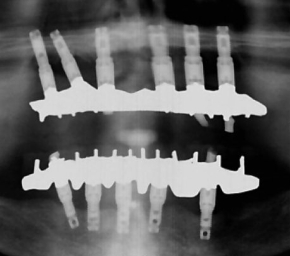Celebrating the man who made our modern dental treatments possible
Bowtied and bespectacled in a video interview, Per Ingvar Brånemark’s emphatic hand gestures underscore his every word: “No one should die with their teeth in a glass of water.” The statement encapsulates the passion and life’s work of the man praised as the father of modern implant dentistry.Early in the course of his long and fruitful career, the Swedish researcher most notably discovered the concept of osseointegration. Osseointegration is a biological process in which a titanium dental implant and the bone around it actually fuse together. The word comes from the Greek word, osteon, for bone, and the Latin word, integrare, to make whole. In practice, osseointegration makes it possible to permanently replace your teeth, whether with a single crown or a full arch, and Brånemark discovered it more than 50 years ago.The discovery of osseointegration was groundbreaking and industry-defining. Thus the name Brånemark is quite fitting for the doctor. It loosely translates from Swedish to mean, “You break the ground.”Discovering Osseointegration
When young Brånemark began observing rabbits in the 1950s he had no intention of studying either titanium or dentistry. He was instead interested in the anatomy of blood flow. In one study, Titanium-encased ocular devices were inserted into the rabbits’ legs, yet when researchers tried to remove the devices they found that the titanium had bonded to the bone. Further blood-related studies with titanium instruments yielded similar outcomes, and Brånemark pivoted his research to focus on titanium’s impact on the body.As more research revealed that titanium bonded to human bone consistently and for the long term, Brånemark named the phenomenon osseointegration. He started applying the concept to dentistry, intending to help the significant portion of the population that was missing teeth.Advances in Implant Dentistry
 In 1965, Brånemark treated the first patient to ever receive titanium dental implants, a Swedish man named Gösta Larsson. The restoration was a success. The titanium implants lasted more than 40 years—until the end of Larsson’s life. Before this, dental implants were considered risky and even dangerous. Now, single crown titanium dental implants and implant bridges are commonplace.Brånemark’s advances in implant dentistry eventually led to the All-on-4 treatment system, which Paulo Maló performed successfully for the first time in 1998. All-on-4 is a graftless approach to a full arch, fixed dental prosthesis that is characterized by the use of 4 angled dental implants and one-stage, immediate loading. Put simply, “all” of a restorative bridge can be mounted “on 4” dental implants, inspiring the name of the concept. Such a treatment would have been impossible without an understanding of osseointegration.Brånemark continued to apply the concept of osseointegration to fields of health and wellness outside of dentistry. Bone-anchored titanium hearing aids, for example, have helped many people hear by conducting sound through their skull bones, and osseointegrated prosthetics have given amputees and trauma patients new limbs and body parts fix to titanium implants bonded to their bones.
In 1965, Brånemark treated the first patient to ever receive titanium dental implants, a Swedish man named Gösta Larsson. The restoration was a success. The titanium implants lasted more than 40 years—until the end of Larsson’s life. Before this, dental implants were considered risky and even dangerous. Now, single crown titanium dental implants and implant bridges are commonplace.Brånemark’s advances in implant dentistry eventually led to the All-on-4 treatment system, which Paulo Maló performed successfully for the first time in 1998. All-on-4 is a graftless approach to a full arch, fixed dental prosthesis that is characterized by the use of 4 angled dental implants and one-stage, immediate loading. Put simply, “all” of a restorative bridge can be mounted “on 4” dental implants, inspiring the name of the concept. Such a treatment would have been impossible without an understanding of osseointegration.Brånemark continued to apply the concept of osseointegration to fields of health and wellness outside of dentistry. Bone-anchored titanium hearing aids, for example, have helped many people hear by conducting sound through their skull bones, and osseointegrated prosthetics have given amputees and trauma patients new limbs and body parts fix to titanium implants bonded to their bones.

